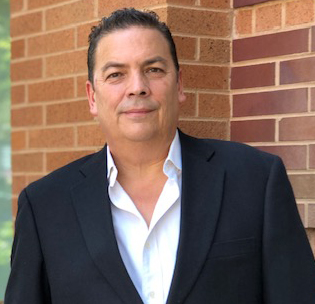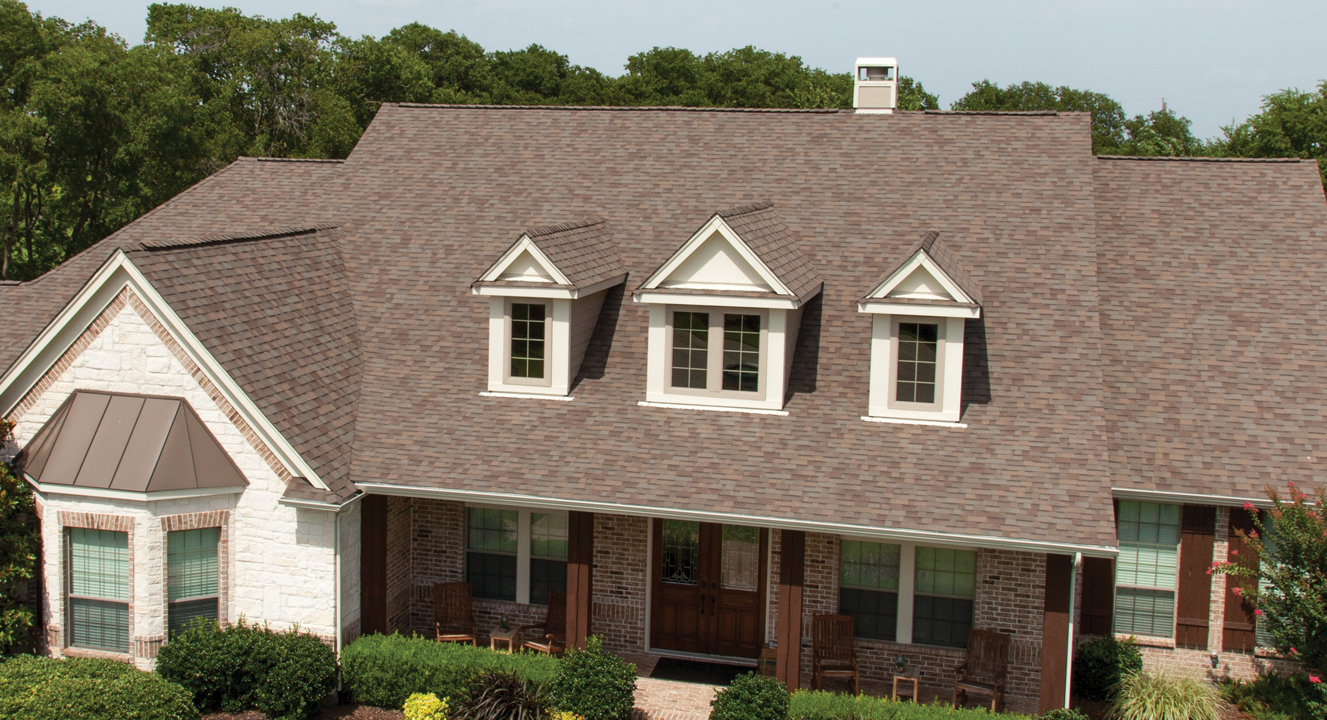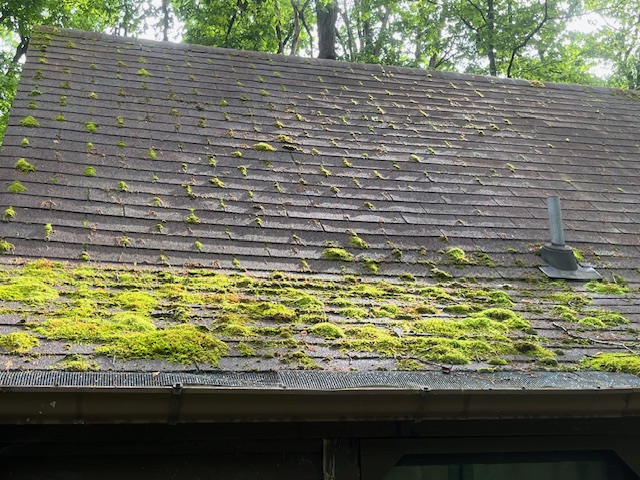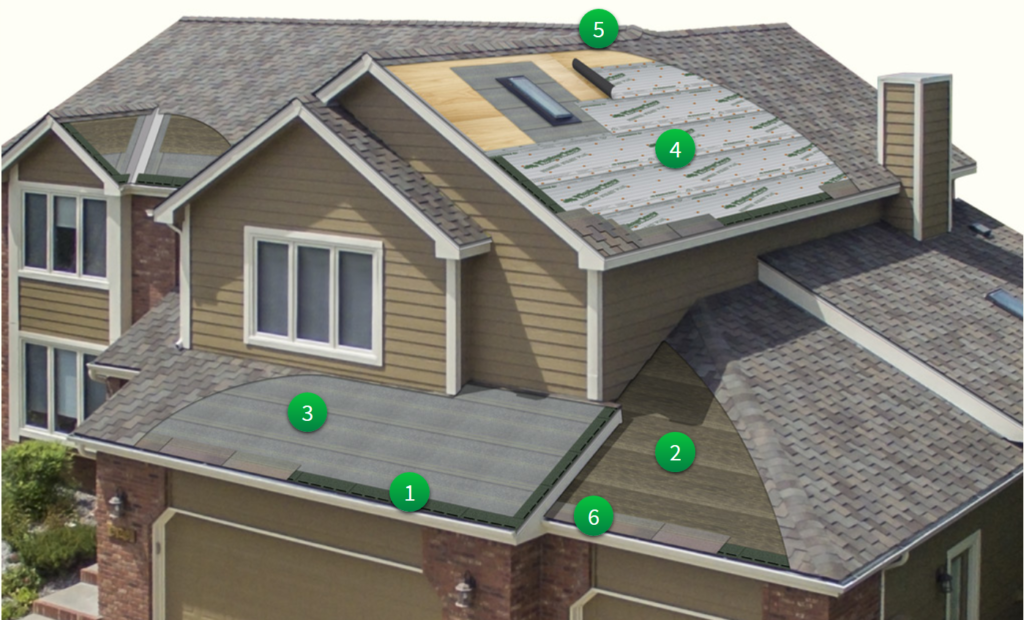Asphalt shingles are a popular choice for residential roofing due to their cost-effectiveness, durability, and ease of installation. However, like any roofing material, they are not immune to failures. Despite warranties and manufacturer descriptions often boasting a lifespan of 30 years, real-world conditions, particularly in regions like the Midwest, North Pacific, and Eastern areas, tell a different story. Here, asphalt shingles have been observed to last anywhere from 12 to 17 years before showing signs of significant deterioration. Moreover, the prevalence of algae strikes, often occurring as early as the first three years after installation, further challenges the notion of extended longevity. However, you could avoid many of these common issues found in oxidized asphalt shingles by choosing an up-to-date technology like SBS Malarkey shingles.
In this comprehensive guide, we’ll explore the common failures of oxidized asphalt shingles, how environmental factors such as trees and north-facing exposures can accelerate these failures, the impact of human errors during installation, and the importance of choosing quality shingles and reputable roofing contractors. Finally, we’ll provide practical strategies to mitigate these issues and extend the life of your roof.
COMMON FAILURES OF OXIDIZED ASPHALT SHINGLES
Understanding the common issues that asphalt shingles face can help homeowners and professionals identify and address problems early. Here are six frequent failures:
1. Granule Loss
Description: The protective granules on the surface of the shingles start to wear off.
Causes: Weathering from UV exposure, heavy rain, wind, and physical impact can lead to granule loss. Poor-quality manufacturing can also contribute to this issue.
Consequences: Loss of granules exposes the underlying asphalt, leading to accelerated aging, increased UV damage, and a higher likelihood of leaks.
2. Curling and Cupping
Description: The edges of the shingles begin to curl upwards (curling) or the center of the shingle rises while the edges stay flat (cupping).
Causes: Curling and cupping are often caused by moisture absorption, poor ventilation, and thermal cycling (repeated heating and cooling).
Consequences: These deformations can compromise the roof’s ability to shed water properly and make the shingles more susceptible to wind damage.
3. Cracking
Description: Visible cracks appear in the shingles.
Causes: Thermal expansion and contraction, aging, and manufacturing defects can cause cracks.
Consequences: Cracks can allow water to penetrate the shingle, leading to leaks and potential damage to the roof structure.
4. Blistering
Description: Raised bubbles or blisters form on the surface of the shingles.
Causes: Blistering is often caused by moisture trapped within the shingle during manufacturing or by excessive heat exposure.
Consequences: Blisters can pop, leading to granule loss and exposing the asphalt to further weathering and potential water infiltration.
5. Algae and Moss Growth
Description: Dark streaks from algae or green patches from moss appear on the shingles.
Causes: Algae and moss thrive in moist, shaded environments. Humidity, poor drainage, and lack of sunlight can encourage their growth.
Consequences: While algae mostly causes cosmetic issues, moss can trap moisture against the shingles, leading to degradation and potential leaks.
6. Loss of Adhesive Seal
Description: The adhesive strip that seals shingles together fails, causing shingles to lift or separate.
Causes: This can be due to improper installation, aging, or environmental factors such as high winds and temperature fluctuations.
Consequences: Loss of adhesive seal can lead to shingle blow-off, increased wind damage, and water infiltration.
ENVIRONMENTAL IMPACT: TREES AND NORTH-FACING EXPOSURES
Environmental factors play a significant role in the longevity of asphalt shingles. Proximity to trees and the orientation of the roof can accelerate shingle deterioration.
TREES CLOSE TO YOUR HOME
1. Shade and Moisture Retention
Effect: Trees can provide significant shade, preventing the roof from drying properly after rain or dew. Prolonged moisture can lead to issues like moss and algae growth, accelerating shingle deterioration.
Consequences: Constant moisture exposure can cause shingles to deteriorate more quickly, leading to granule loss, curling, and blistering.
2. Physical Damage
Effect: Overhanging branches can rub against the shingles during windy conditions, causing physical damage.
Consequences: This can lead to granule loss and physical abrasions that weaken the shingles and make them more susceptible to other types of damage.
3. Debris Accumulation
Effect: Leaves, twigs, and other debris can accumulate on the roof, especially in valleys and gutters.
Consequences: This debris can trap moisture against the shingles and cause water to pool, increasing the risk of leaks and promoting the growth of moss and algae.
NORTH-FACING EXPOSURES
1. Limited Sunlight
Effect: North-facing roofs typically receive less direct sunlight, especially in the Northern Hemisphere.
Consequences: Less sunlight means the roof stays damp longer after rain or dew, promoting the growth of moss, algae, and lichens. These organisms can retain moisture and cause the shingles to degrade faster.
2. Moss and Algae Growth
Effect: Shady, damp environments are ideal for moss and algae.
Consequences: The growth of moss and algae can not only make the roof look unsightly but also cause shingle deterioration. Moss can lift shingles as it grows, allowing water to seep underneath, while algae can retain moisture and cause staining that might affect the shingles’ heat absorption properties.
3. Temperature Fluctuations
Effect: North-facing roofs may experience more significant temperature fluctuations because they are slower to warm up and dry out.
Consequences: These fluctuations can lead to thermal expansion and contraction of the shingles, contributing to cracking and other forms of thermal damage over time.
HUMAN ERRORS IN INSTALLATION
Human errors during the installation of asphalt shingles can significantly impact their performance and longevity. Here are some common installation errors and their effects:
1. Improper Nailing
Description: Nails are not placed correctly or driven too deeply/shallowly.
Consequences: Improper nailing can cause shingles to become loose or fall off, leading to potential water infiltration and wind damage. Overdriven nails can puncture the shingle, while underdriven nails can hold the shingle improperly.
2. Incorrect Shingle Alignment
Description: Shingles are not aligned correctly during installation.
Consequences: Misaligned shingles can create gaps and expose the roof to water infiltration. This can also affect the aesthetic appearance and the overall integrity of the roof.
3. Insufficient Overlap
Description: Shingles are not overlapped enough.
Consequences: Insufficient overlap can allow water to seep between shingles, leading to leaks and potential damage to the underlying roof structure.
4. Poor Flashing Installation
Description: Flashing around chimneys, vents, and other roof penetrations is not installed correctly.
Consequences: Poorly installed flashing can be a major source of leaks. Water can seep into gaps and cause significant damage to the roof deck and interior of the home.
5. Inadequate Ventilation
Description: The attic is not properly ventilated.
Consequences: Poor ventilation can lead to heat buildup and moisture accumulation in the attic, causing shingles to age prematurely, curl, and potentially develop mold and mildew.
6. Failure to Install Starter Shingles
Description: Omission of starter shingles at the roof edges.
Consequences: Without starter shingles, the edges of the roof are more vulnerable to wind uplift and water infiltration, leading to potential damage and shingle blow-off.
PARTNERING WITH MALARKEY AND REBEL ROOFER
Choosing the right asphalt shingles and ensuring proper installation are vital for a durable and long-lasting roof. Understanding common shingle failures and factors that accelerate deterioration can help homeowners protect their investment.
Environmental factors like nearby trees and north-facing exposures significantly impact shingle performance. Trees can trap moisture and cause faster deterioration, while north-facing sides may experience more temperature fluctuations and moss growth. Regular maintenance, including tree trimming, debris removal, and proper attic ventilation, is essential.
Human errors during installation can also weaken the roof. Issues like improper nailing, shingle alignment, inadequate flashing, and ventilation can lead to leaks and premature failure. Partnering with experienced roofing professionals ensures proper techniques and adherence to guidelines.
Choosing high-quality shingles from reputable manufacturers like Malarkey Roofing Products enhances roof longevity and performance. Malarkey shingles, featuring innovative SBS technology, offer superior durability and protection against the elements.
The partnership between Malarkey and Rebel Roofer exemplifies excellence in roofing services. Combining Malarkey’s technology with Rebel Roofer’s craftsmanship ensures meticulous installation and maintenance. This collaboration provides lasting resilience, protecting homes from the elements for years to come.
Conclusion
In conclusion, by addressing the common failures of asphalt shingles, understanding their environmental and human impacts, and choosing quality products and professionals like Malarkey and the Rebel Roofer, homeowners can ensure their roofs provide reliable protection for years to come. With proper maintenance and proactive measures, you can enjoy peace of mind knowing that your home is safeguarded against the elements.
Are you ready for your Roof Replacement Project?
Please fill out the form by clicking on https://rebelroofer.com/contact
Rafael Antonio Huguet Lotterer, Owner of Rebel Roofer – A division of E81 Studio
Call us: (240) 205-3758
Or E-mail us at: info@rebelroofer.com








